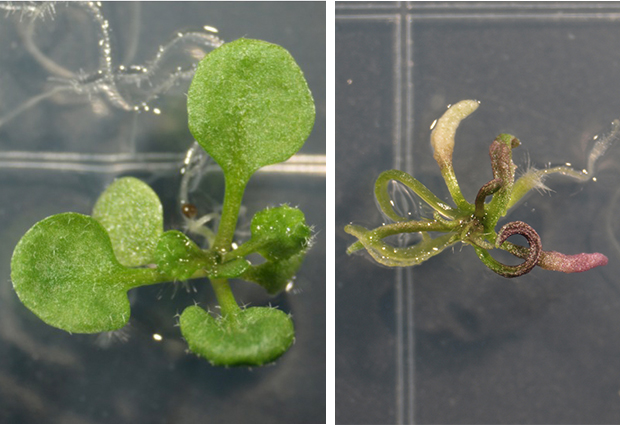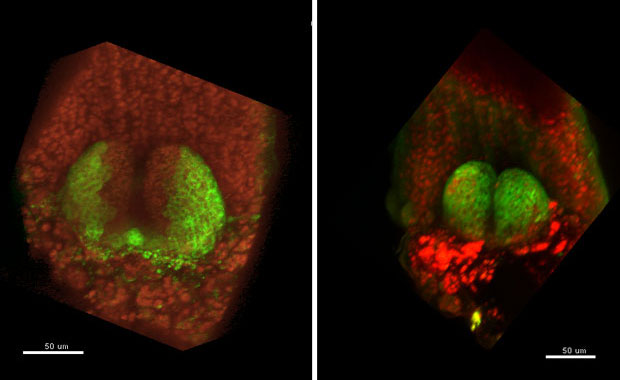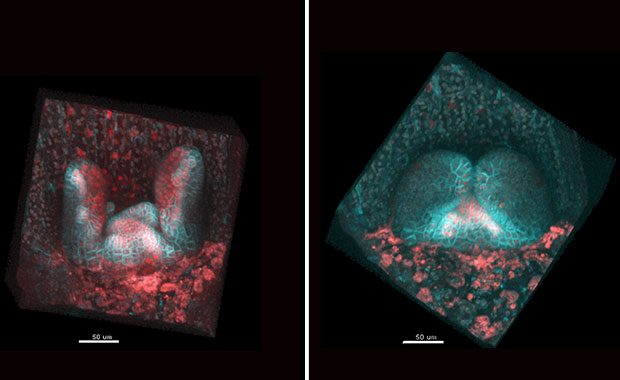In pursuit of flat growth in leaves
EMBL scientists investigate how leaves grow flat to efficiently capture sunlight

How does a set of plant cells grow from a bump into a flat leaf that can efficiently capture sunlight? In a paper published this week in PNAS, EMBL scientists show how different types of molecules on the top and bottom of a leaf keep each other in check, ensuring the leaf grows flat.
As a leaf develops, its cells create two different tissues, one on each side of the leaf. Scientists knew that only cells in the top side produce proteins called Class III HD-ZIPs. In the bottom layer, these Class IIIs are suppressed by another set of molecules called microRNA165/166. But how are those microRNAs confined to the bottom side?
Marcus Heisler’s labs at EMBL and at the University of Sydney found that the Class IIIs in the top tissues of the leaf act together with some closely related proteins, the Class IIs, to suppress the microRNAs.
When Paz Merelo, a postdoc in Heisler’s lab at EMBL, examined Arabidopsis plants in which these Class IIs were not functioning, the microRNAs were no longer inhibited in the top side of the growing leaves.

So in the absence of Class IIs, the Class IIIs alone aren’t able to counter the microRNAs. The microRNAs can then switch off the Class IIIs on both the bottom and the top of the leaves, and consequently the leaves don’t flatten out, but grow stem-like.

“The activities of the Class III HD-ZIPs and microRNAs somehow have to be perfectly balanced, right from the beginning, to get a nice leaf,” says Heisler. “And that seems unlikely to happen on its own: so what’s maintaining this balance?”
Heisler and colleagues are following up on the work, looking into how the balance between ‘top’ and ‘bottom’ factors is maintained, honing in on exactly how Class IIIs and Class IIs work together, and investigating other molecules that are restricted to only one side of a growing leaf.
The study was a collaboration with Stephan Wenkel’s lab at the University of Copenhagen.



